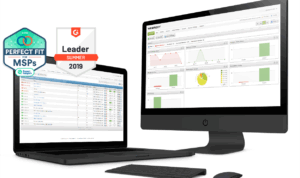Best accounts payable automation software is revolutionizing the way businesses manage their financial transactions, streamlining processes and increasing efficiency. As the demand for faster and more accurate payment systems grows, companies are turning to automation solutions that not only reduce manual workload but also enhance accuracy and compliance. This evolution in financial management allows organizations to focus on strategic growth while maintaining a clear view of their cash flow and vendor relationships.
In today’s fast-paced business environment, integrating the best accounts payable automation software can transform traditional payment practices into a seamless, technology-driven operation. By embracing these innovative tools, businesses can simplify invoice processing, improve payment accuracy, and enhance vendor communication, ultimately leading to stronger financial health and operational success.
In today’s fast-paced and increasingly digital world, the ability to communicate effectively has become more vital than ever. Clear communication not only helps in building relationships within teams but also plays a crucial role in driving organizational success. Let’s explore the key elements that contribute to effective communication in the modern workplace.
Understanding the Importance of Communication
Effective communication is often described as the backbone of any successful organization. It facilitates collaboration, promotes innovation, and enhances overall productivity. When team members communicate openly and honestly, they are more likely to solve problems collaboratively and make informed decisions. Moreover, effective communication helps to reduce misunderstandings and conflicts, which can derail progress and create a negative work environment.
Types of Communication
Communication in the workplace can be categorized into several types:
- Verbal Communication: This involves the spoken word, including face-to-face conversations, video calls, and phone discussions. Verbal communication is crucial for conveying tone and emotion, making it an essential component in any interaction.
- Non-Verbal Communication: Body language, facial expressions, and gestures fall under this category. Non-verbal cues can often convey more than words, making it important to be aware of your body language and how it may be interpreted by others.
- Written Communication: This includes emails, reports, and instant messages. Clear and concise written communication is vital in documenting information and ensuring that messages are received accurately.
- Visual Communication: Charts, graphs, and presentations are all forms of visual communication. They help in simplifying complex information and making it more digestible for the audience.
Key Elements of Effective Communication
While various forms of communication exist, certain elements are universal to ensure that the message is conveyed effectively:

1. Clarity
The first step to effective communication is clarity. Be clear about the message you want to convey. Avoid jargon or complex language that may confuse your audience. When your message is straightforward, it reduces the chances of misinterpretation.
2. Active Listening
Communication is a two-way street. Actively listening to others shows that you value their input and understand their perspective. This involves not just hearing the words but also paying attention to the speaker’s tone, body language, and emotions.
3. Empathy
Understanding and acknowledging the feelings of others can enhance communication. Empathy allows you to connect on a deeper level, fostering trust and rapport. Consider the emotional state of your colleagues and adjust your approach accordingly.
4. Feedback
Providing and receiving feedback is essential in effective communication. Constructive feedback helps in personal and professional growth. On the other hand, being open to receiving feedback shows that you are willing to improve and adapt.

5. Adaptability
The modern workplace is diverse, with individuals from various backgrounds and cultures. Being adaptable in your communication style can help bridge gaps and ensure that everyone feels included and understood.
Overcoming Communication Barriers
Despite our best efforts, barriers to communication can still arise. Here are some common barriers and how to overcome them:
1. Language Barriers
In a multicultural workplace, language differences can lead to misunderstandings. To overcome this, use simple language and encourage the use of translation tools when necessary. Patience and clarity are key.
2. Technological Barriers
With the rise of remote work, many rely on technology for communication. However, tech issues can hinder effective interaction. Ensure that all team members are comfortable with the tools being used, and provide training if necessary.
3. Emotional Barriers
Personal issues can affect how individuals communicate. Encourage an open and supportive environment where team members feel comfortable expressing their thoughts and emotions without judgment.
The Role of Technology in Communication
Technology has transformed how we communicate in the workplace. Tools such as email, instant messaging, and video conferencing have made it easier to connect with colleagues, regardless of location. However, with these advancements come challenges, such as information overload and the potential for miscommunication due to the lack of non-verbal cues.
1. Embracing Digital Tools
Organizations should embrace technology and provide their employees with the necessary tools to communicate effectively. Platforms like Slack, Microsoft Teams, and Zoom facilitate collaboration and keep teams connected.
2. Setting Communication Guidelines
To maximize the effectiveness of digital communication, establish guidelines. Determine which platforms to use for different types of communication (e.g., emails for formal communication, instant messaging for quick questions) and encourage best practices, such as using clear subject lines and keeping messages concise.
Creating a Culture of Open Communication
Organizations should foster a culture that encourages open communication. This involves creating an environment where individuals feel safe to express their thoughts and opinions without fear of repercussions. Here are some strategies to promote open communication:
1. Lead by Example
Leadership plays a crucial role in establishing communication norms. Leaders should model effective communication behaviors, such as active listening and providing constructive feedback.
2. Encourage Collaboration
Promote teamwork and collaboration among employees. Organize team-building activities that foster connections and encourage dialogue between team members.
3. Provide Training
Offer training sessions on effective communication skills. This can help employees improve their verbal, non-verbal, and written communication skills, enhancing overall team dynamics.
Conclusion
In conclusion, effective communication is essential in the modern workplace. By understanding its importance, recognizing various types of communication, and implementing key strategies, organizations can foster an environment that promotes dialogue and collaboration. As we continue to navigate the complexities of the workplace, prioritizing communication will undoubtedly lead to greater success and a more harmonious working atmosphere.
FAQ Summary
What is accounts payable automation software?
Accounts payable automation software streamlines the invoice and payment process, reducing manual entry and errors while improving efficiency and tracking.
How can accounts payable automation benefit my business?
It enhances accuracy, saves time, reduces costs, and improves cash flow management by automating invoice processing and payment approvals.
Is accounts payable automation secure?

Yes, reputable accounts payable automation solutions implement robust security measures such as encryption and access controls to protect sensitive financial data.
What features should I look for in accounts payable automation software?
Key features include invoice scanning, workflow automation, reporting tools, integration capabilities with existing systems, and user-friendly interfaces.
Can small businesses benefit from accounts payable automation?
Absolutely! Small businesses can greatly benefit from automation by saving time on manual tasks, reducing errors, and improving cash flow management.




























